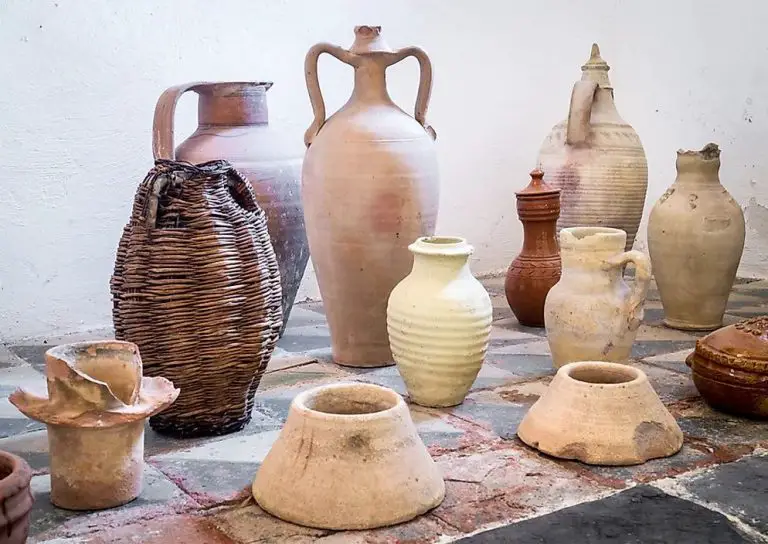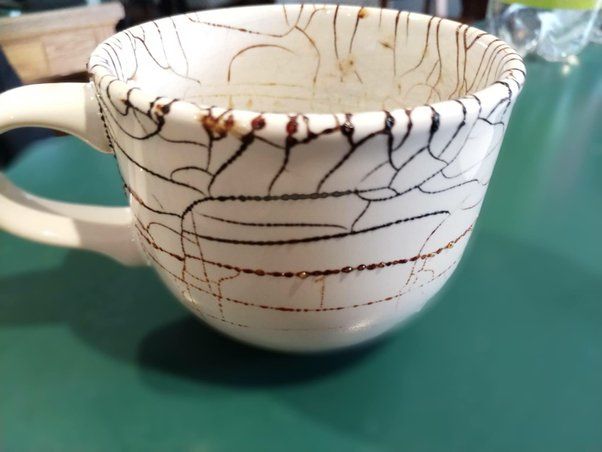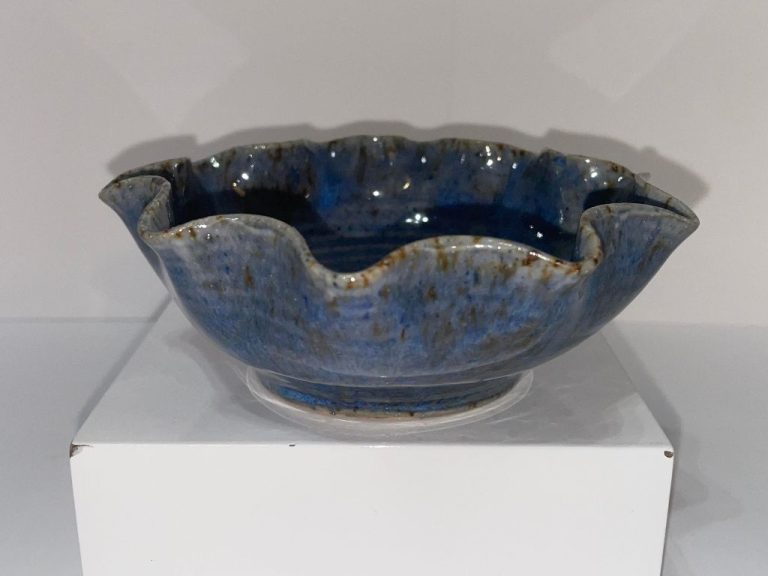What Are Flat Clay Beads Made Of?
Flat clay beads are a type of bead made from clay that has been shaped into a flat or disk-like form before being fired in a kiln. Clay beads have been around for thousands of years, with some of the earliest examples found in ancient Sumerian and Egyptian tombs dating back to 3500 BCE.
The basic process for making flat clay beads has remained relatively unchanged over the centuries. At its core, it involves shaping moist clay into the desired form, letting it dry, and then hardening it in a hot kiln, which permanently sets the shape through a process called vitrification. While the methods have evolved, flat clay beads historically were made using simple earthen clays found locally near the artisans.
Today, polymer and air-dry clays offer more options for easy shaping while reducing the need for firing kilns. But traditional clays and firing methods are still commonly used. The raw materials comprise clay body ingredients such as earthen clays, minerals, and organic additives. Pigments are often added for color. After shaping and drying, the beads are fired at high temperatures to permanently harden them.
Clay
The most common types of clay used for making flat beads are earthenware and porcelain. Earthenware clays are lower firing, tend to be porous, and are easier to work with. Porcelain clays require higher firing temperatures, are less porous, and can result in thinner, more delicate beads. The plasticity, workability, and durability make both earthenware and porcelain ideal clays for flat bead making.
Clay’s ability to be shaped when wet and become hard when fired is essential. The clay body must be plastic enough to be rolled flat and cut into the desired shapes when leatherhard. The clay also needs to be strong enough in its dried and bisque fired states to remain intact through handling and firing. Porosity is another important property as more porous clays allow gases to escape during firing, reducing cracks and breakage. The color and texture of the raw clay also impacts the look of the finished beads.
Additives
Additives serve an important purpose in clay bead making. They are materials added to the main clay body to provide certain characteristics and improve the overall quality of the clay. Some common additives used in clay beads include:
Grog – This is crushed, previously fired clay that has been ground into a powder. Adding grog makes the clay more porous which prevents cracking and shrinkage when firing. It also strengthens the bead and lowers the risk of breakage.
Chamotte – Similar to grog, chamotte is pre-fired clay material in a granular form rather than a powder. It provides the same benefits as grog in preventing cracking and shrinkage.
Sand – Adding sand to clay gives the beads a grittier, textured feel and appearance. It also aids in preventing shrinkage and cracking during firing.
Organic material – Materials like sawdust, leaves, or straw are sometimes added to clay for beads. When burned away during firing, they leave tiny cavities in the clay which make the beads lighter.
Understanding the purpose of these additives allows clay bead artisans to customize the clay bodies to achieve the characteristics they desire in their finished beads.
Pigments
Pigments are often added to flat clay beads to achieve a variety of colors. While natural pigments were used historically, most modern flat clay beads use synthetic pigments.
Natural pigments were derived from minerals, plants, and even animals. Common examples include ochre for earth tones, charcoal for black, and turmeric for yellow. Plant-based dyes offered additional colors like red from madder root. While cheaper, natural pigments could be duller and fade over time.
Synthetic pigments are artificially created and offer more consistency and vibrancy. Modern synthetic pigments emerged in the 19th century and expanded the color palette for flat clay beads dramatically. Common options include cadmium for reds/yellows, cobalt for blues, titanium white, and carbon black. Synthetics hold color better but can be more toxic requiring careful handling.
Shaping and Drying
There are a few common techniques for shaping flat clay beads by hand. One method is to roll the clay out into a sheet or slab using a rolling pin. The sheet can then be cut into basic shapes with cookie cutters or a blade. Another option is to roll small balls or tubes of clay by hand. These balls or tubes can be flattened and smoothed into disc, rectangle, or oval shapes.
In addition to hand shaping, molds and extruders allow for more consistent sizing and shapes. Molds are useful for mass producing identical flat beads. The clay is pressed into the mold cavity to create the form. Extruders push the clay out through a shaped die to create a continuous strip that can be cut into lengths.
After shaping, the flat beads must dry fully before firing. Thinner beads may only need a few hours to dry, while thicker beads require longer. Drying too quickly can cause cracks as moisture evaporates from the clay. The beads are dried slowly at room temperature. Direct heat should not be used, as it can create cracks or warping.
Firing
The purpose of firing clay beads is to permanently harden them through intense heat exposure. Once shaped and dried, the unfired beads contain water and are fragile. Firing transforms the clay on a molecular level, driving out the water and fusing the clay particles together into a strong, finished material.
Most clays require firing temperatures between 1000-1200°F to fully vitrify and harden. Specific clay types and any additives determine the ideal firing range. For example, pure clay needs higher temperatures near 1200°F, while clay mixed with fluxes may mature at lower temperatures around 1000°F.
Kilns provide the high, sustained heat needed for firing. Two main kiln types used are electric and fuel-burning kilns. Electric kilns offer precise digital control over temperature ranges and heating/cooling rates. Gas and wood-fired kilns reach similar temperatures but require more manual monitoring and experience to operate successfully.
Polishing
Once the fired clay beads are cooled, polishing is used to smooth any rough surfaces and bring out the shine.
The most common polishing methods are tumbling, burnishing, and buffing. Tumbling involves placing the beads in a barrel with abrasive media like sand, plastic pellets, or fine steel shot. As the barrel rotates, the media tumbles against the beads, smoothing and polishing their surfaces. Burnishing uses friction to polish the beads. A hard tool like agate, steel, or ceramic is rubbed against the beads to manually polish them. Buffing utilizes buffing wheels or belts made of materials like cotton, leather, or canvas. Polishing compounds are applied as the beads are buffed to create a glossy shine.
With methods like tumbling or buffing, the longer the beads are processed, the higher the shine. Adjusting factors like media, speed, and compounds can help achieve the desired level of gloss. When burnishing by hand, the polisher must ensure an even application of pressure over the entire surface of the beads. With careful technique and patience, all these polishing methods can produce beautifully glossy beads.
Decorating
After the clay beads have been fired and polished, many artisans choose to further decorate them to enhance their beauty. There are two main techniques used for decorating fired clay beads:
Painting
Clay beads can be painted with acrylic paints or ceramic glazes. Acrylic paint is applied directly to the bead and allowed to dry. Glazes are applied and then fired again in a kiln to set the glaze. Glazes allow for shine and depth of color that acrylics cannot achieve. Both paints and glazes come in a wide variety of colors, allowing for tremendous creativity in decorating clay beads.
Adding Embellishments
In addition to painting, clay beads can be decorated by adding other elements. Some options include:
- Glitter
- Gems
- Charms
- Ribbons
- Seed beads
- Found objects like shells or leaves
These types of embellishments can be glued onto the beads before or after firing. The embellishments add texture, color, and unique personality to clay beads.
Sealing
After the beads are decorated, many artisans apply a protective seal to finish them off. Sealing serves several purposes – it protects the bead surface from damage, enhances color vibrancy, and provides a smooth, glossy look. Common sealing materials include varnish, wax, laquer, and resin.
Varnish is often used as it dries quickly and provides a durable, transparent coating. Multiple coats are usually applied to ensure full coverage. Wax seals also enhance shine and provide protection. Laquer creates a durable glossy finish but can yellow over time. Resins like polyurethane provide a thick coating that is highly protective and creates a deep, glass-like shine.
When sealing, it’s important to choose a product specifically formulated for the type of clay used. Water-based seals work for air-dried clays while solvent-based ones are needed for fired clays. Seals should be allowed to fully cure as directed before wearing or handling to prevent smudging.
With the seal applied, flat clay beads are complete and ready to use for jewelry, craft projects, wall hangings, ornaments, or any other decorative purpose. A final seal protects the bead while enhancing its natural beauty.
Conclusion
Flat clay beads start with basic clay materials like refined earthen clays or polymer clay. A variety of additives like grog or glass beads may be mixed in to alter the characteristics of the finished beads. Pigments are often added to color the clay. The shaped beads are dried, fired in a kiln, and polished to create the final product. The fired clay beads can then be painted, glazed, etched, or otherwise decorated as desired before being sealed for protection and wearability.
With this wide range of clay types and additives, an endless array of flat clay beads can be created. The beads can be shaped into geometric designs, images, symbols, letters, and more. The colors and textures possible are limited only by the crafter’s imagination and skills. Flat clay beads are wonderful for making jewelry, ornaments, decorations, kid’s crafts, and any application requiring lightweight, durable, and creative beads.




